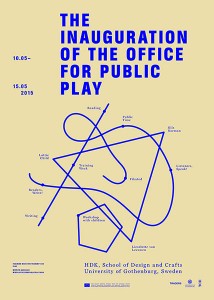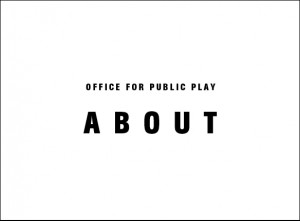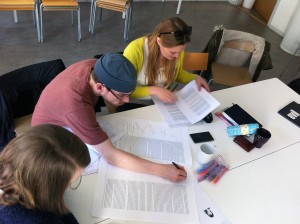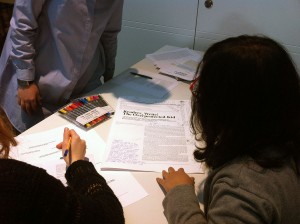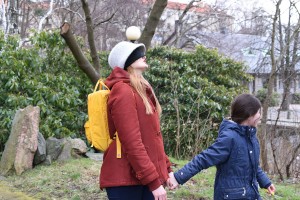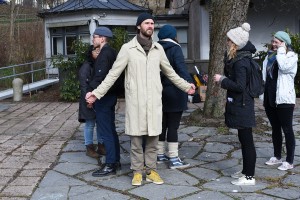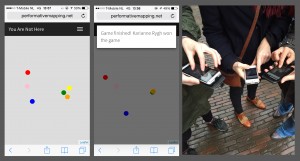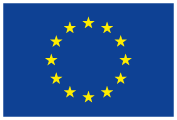The second training week of the TRADERS project focussed on PLAY and participative methods for working with children and young adults on art and design projects in public space. Starting from an empirical case with children in the city of Gothenburg, the training week explored debate and writing as a method for research and reflection. This 6‐day training acted as a mutual learning and research process between the TRADERS Early Stage Researchers, peers, stakeholders, a child group and three invited experts. The training week was hosted by HDK, School of Design and Crafts, University of Gothenburg, Sweden.
The first, introductory day gave the research team an insight into the local context of the city of Gothenburg, particularly on the child perspective and the vision to involve children and young adults in democratic processes. These presentations were followed by the ludic intervention ‘The inauguration of the Office of Public Play’ at Götaplatsen, one of the main squares in the centre of Gothenburg. We moved on to Guldhedstorget to perform a series of playful guided tours, designed by the Child Culture Design students of HDK, School of Design and Crafts, in collaboration with pupils from ISGR, the International School of the Gothenburg Region. The tours aim to introduce diverse perspectives on children’s freedom to move in the city.
During the next few days, the research team worked in smaller groups. These groups consisted out of the TRADERS ESRs, peers, researchers from other host institutions and both associated partners: Kompan and Göteborgs Kulturförvaltning. Each day of the training week started with a “Public Time“, a play session performed in public space, inspired by Augusto Boal’s Games For Actors and Non‐Actors and/or the Archive for Public Play.
The actual training week started with a workshop with a group of children from the 4th grade (10 years) from ISGR located in the Guldheden neighbourhood. The workshop aimed to research the element of “time” in relation to public space. From Tuesday until Thursday the research team reflected on the process and outcome of this workshop in relation to “free play” and the input of three invited experts: Lieselotte Van Leeuwen – psychologist, Lottie Child – artist and Nils Norman – artist. These experts provided the research team with a text (before the training week) and a presentation and feedback sessions (during the training week). Each of these reflection days started with a lecture‐presentation by the expert (input session), followed by a group discussion “Listeners, Speak!” (first output session) and a reflection-trough-writing session “Readers, Write!” (second output session). The Listeners, Speak! sessions aim to transform the listener – as part of the audience – into a more active contributor or co-speaker (dialogue) during the group discussions. Readers, Write! is a method and toolkit, designed to facilitate arts and design researchers working with academic texts for artistic research and aims to develop a more extended written synthesis trough dialogue and writing small reflections. Each of these three days ended with a final reflection led by the expert of the day, using a grandstand as probe. These end‐of‐the‐day reflections, called “Fikatid”, took place in various public space locations in the neighbourhood of HDK.
The overall process of reflection, split into three stages of writing, developped into a more elaborated reflection made during the last day of the training week, Friday 15th. This final reflection was generated and supported by individual writings of each participant in the shape of a letter to “the editor of this training week”. The training week was closed with a meta mindset by Michael Kaethler (TRADERS Meta-framework).
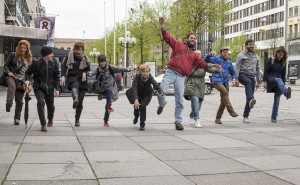
Public Time
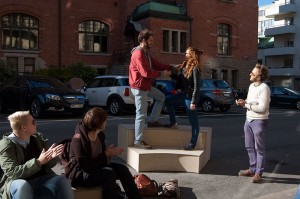
Fika Time
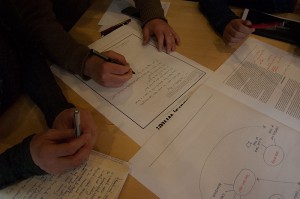
Readers, Write!
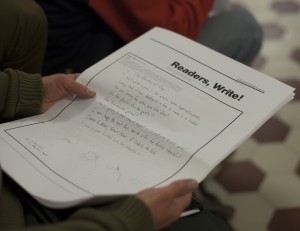
Readers, Write!
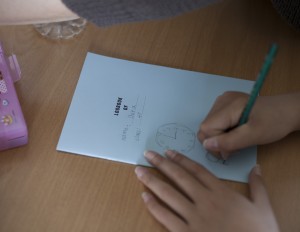
Workshop with children
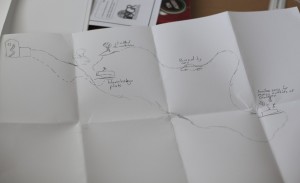
Workshop with children
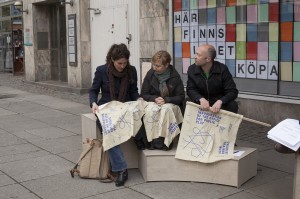
Fika Time
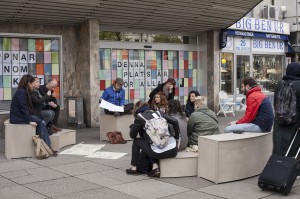
Fika Time










